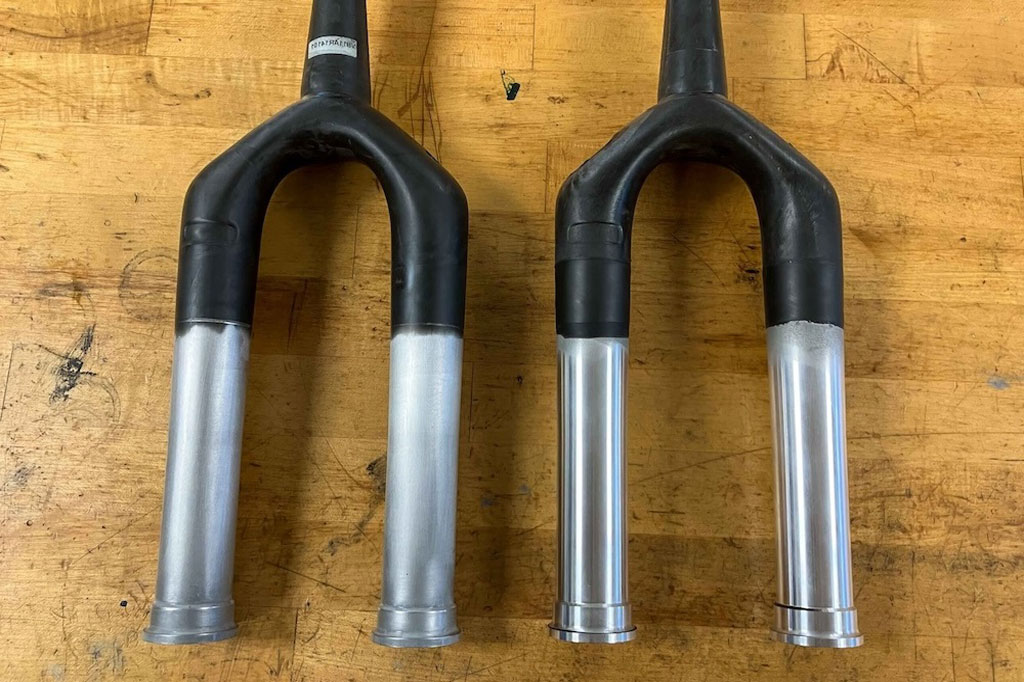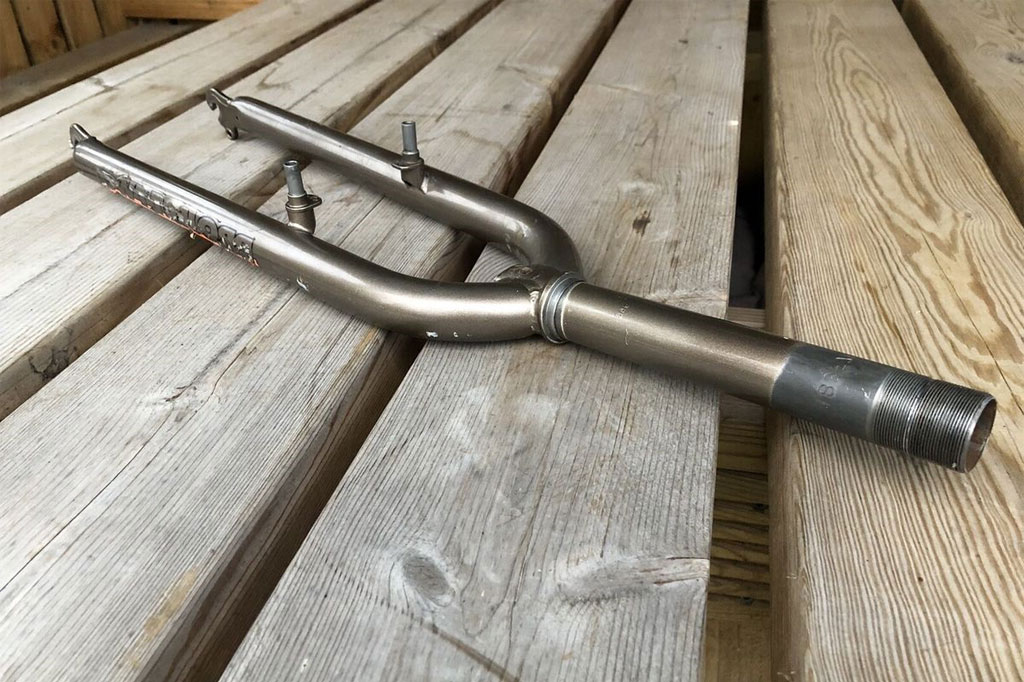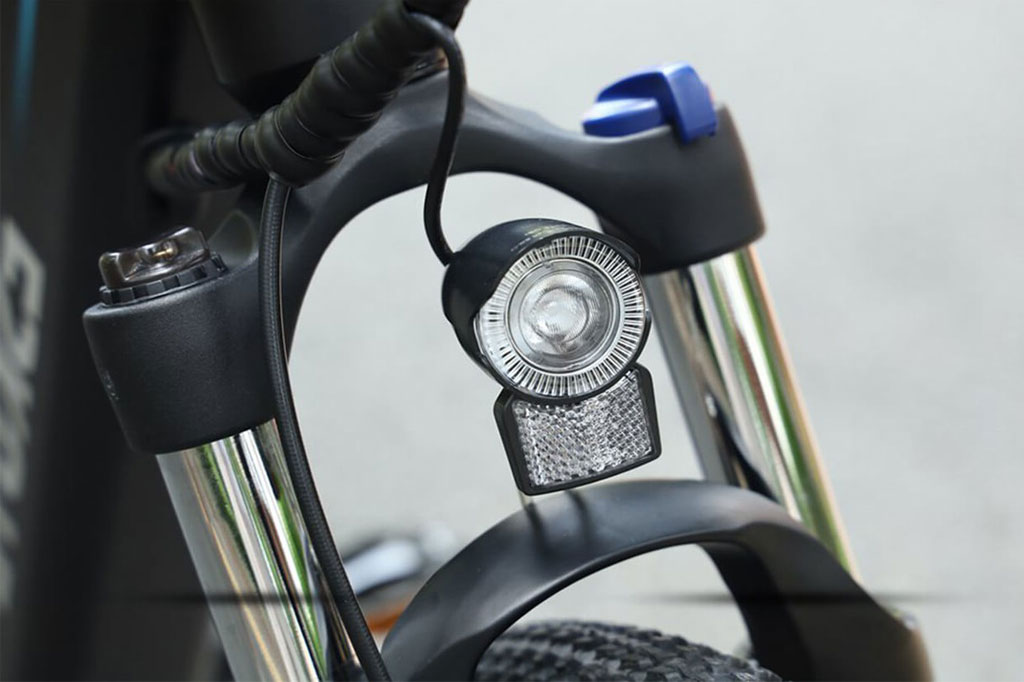In the world of cycling and off-road vehicles, suspension forks are crucial for providing both comfort and control. These parts are crucial in mitigating the impact of abrupt changes in terrain, providing a more stable and comfortable ride for the rider.
When choosing a suspension fork, two primary construction methods come into play: forging and welding. Both methods have their merits, but which offers better longevity and stability?
Understanding Forged Suspension Forks

During the forging manufacturing process, metal is formed under intense pressure to create a robust and long-lasting part. Forged suspension forks are made by applying intense pressure to a block of metal, shaping it into the desired form without cutting or welding. This process produces a single-piece component that is free of joints or weak points, making it incredibly robust.
Benefits of Forging
- Enhanced Strength: Forged suspension forks are renowned for their strength. The metal’s grain structure is realigned throughout the forging process, producing a more consistent and robust material. As a result, there is less chance of failure and the fork can withstand increased stress and shock loads.
- Durability and Longevity: The durability of forged forks is one of their main benefits. They have no weak spots where cracks or wear and tear could occur over time because they are built of a single piece of metal. This results in a longer lifespan, even in harsh off-road conditions.
- Lightweight Design: While forged forks are strong, they can also be made lightweight. The precision of the forging process allows manufacturers to reduce excess material without sacrificing strength, making them ideal for performance-focused riders.
Drawbacks of Forging
- Higher Cost: Because of the intricacy of the forging process and the specialized equipment needed, forged suspension forks are often more expensive to create.
- Limited Design Flexibility: Forging is less flexible than welding in terms of design, especially for complex shapes. While forging produces strong components, the design options are somewhat limited compared to welded forks.
Understanding Welded Suspension Forks

Metal welding fabrication is the process of melting many metal parts together with pressure and heat. Welded suspension forks are made by welding different parts of the fork assembly, such as the steerer tube, crown, and legs. This facilitates the use of a wider range of materials in building as well as more complex designs.
Benefits of Welding
- Design Flexibility: Welding offers more flexibility in design. Manufacturers can combine different materials, such as aluminum or steel, to create suspension forks that meet specific performance needs. This versatility makes welded forks popular for custom or specialized bike builds.
- Cost-Effective: Welded forks are typically more affordable to produce than forged ones. Because welding is a less complicated process and requires fewer specialized equipment, it is an affordable choice for both manufacturers and consumers.
- Personalization: It’s simple to customize with welding. Different components can be welded together to suit specific geometrical and performance requirements, which is beneficial for creating tailored solutions for various types of bikes and riding styles.
Drawbacks of Welding
- Potential Weak Points: The primary disadvantage of welding is the introduction of weak points at the joints where the pieces are welded together. These joints are prone to fatigue and cracking over time, especially under extreme stress or impact.
- Heavier Weight: While welded forks can be strong, they tend to be heavier than their forged counterparts. To ensure durability, more material is often used, which can add extra weight, making them less ideal for performance or competitive cycling.
Longevity: Forged vs. Welded
When it comes to longevity, forged suspension forks generally outperform welded ones. The lack of welded joints eliminates weak points that could develop cracks or fractures over time. This makes forged forks particularly well-suited for riders who demand long-lasting components that can endure rugged terrain and intense riding conditions.
Welded forks, on the other hand, may not last as long, particularly under continuous high-stress use. Welded fork joints are more likely to become worn down over time, necessitating more frequent replacements or repairs.
Stability: Forged vs. Welded
In terms of stability, forged forks also tend to have an edge. The strength of the one-piece construction ensures that the fork can handle impacts and shocks with greater stability, providing a smoother and more controlled ride. For cyclists and off-road vehicle enthusiasts looking for maximum stability, especially on unpredictable terrains, forged forks are often the preferred choice.
Welded forks, while stable, may not offer the same level of confidence as forged options in extreme conditions. The presence of welds introduces variability in the fork’s strength, potentially affecting its stability under heavy use.
Which Is Better for eBike?
Your priorities will ultimately determine whether suspension forks—forged or welded—you choose. If longevity, durability, and stability are your top concerns, and you’re willing to invest in a premium product, forged suspension forks are likely the better option. They are ideal for riders who frequently tackle rough terrains or need a component that will last through years of use.
If you’re looking for design flexibility, customization options, or a more affordable option, welded suspension forks may be the right choice. They are well-suited for casual riders or those who want to experiment with different designs and materials without breaking the bank.
